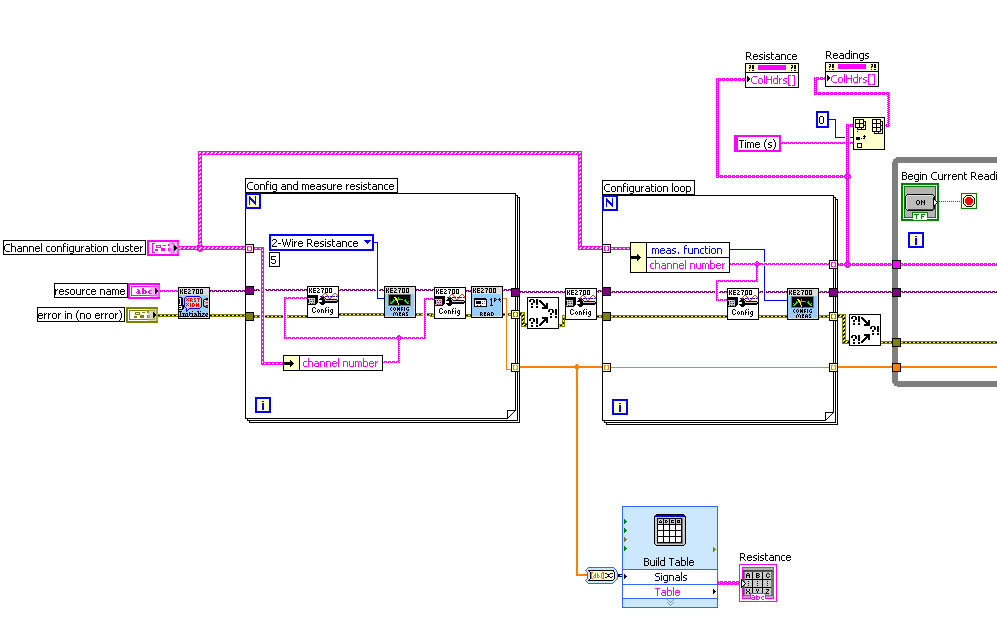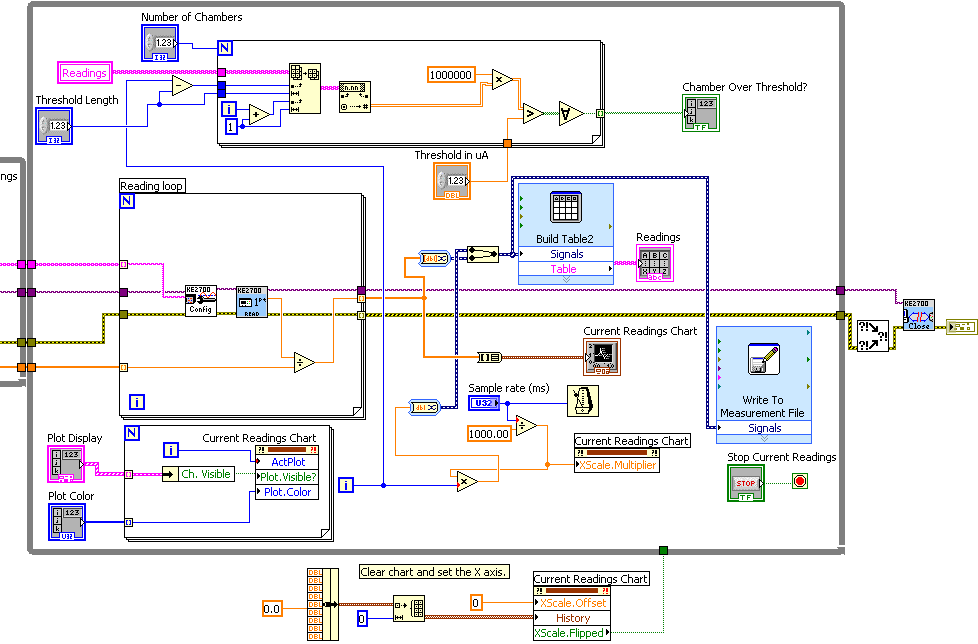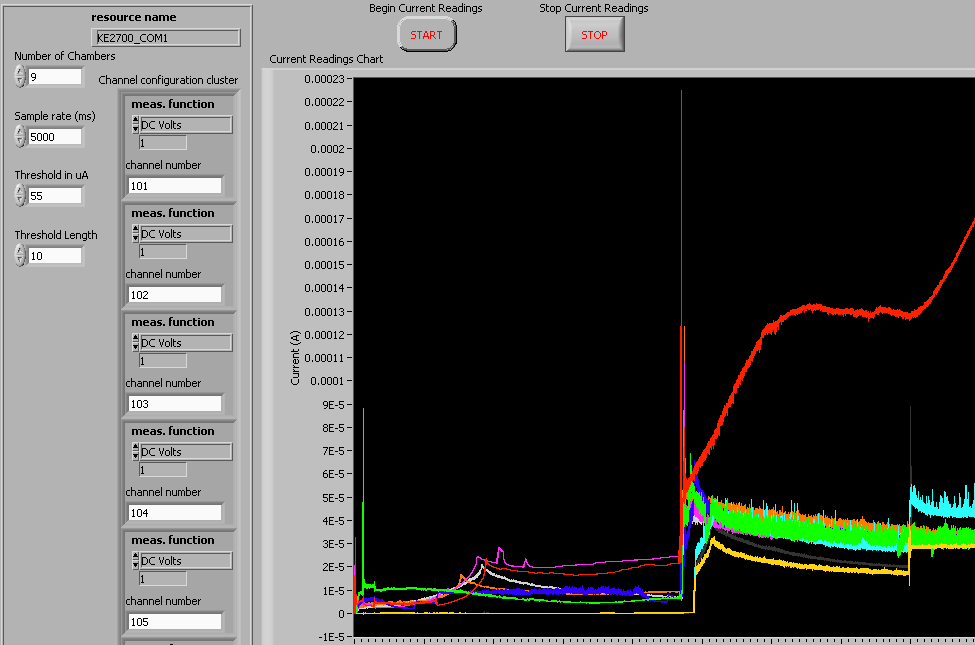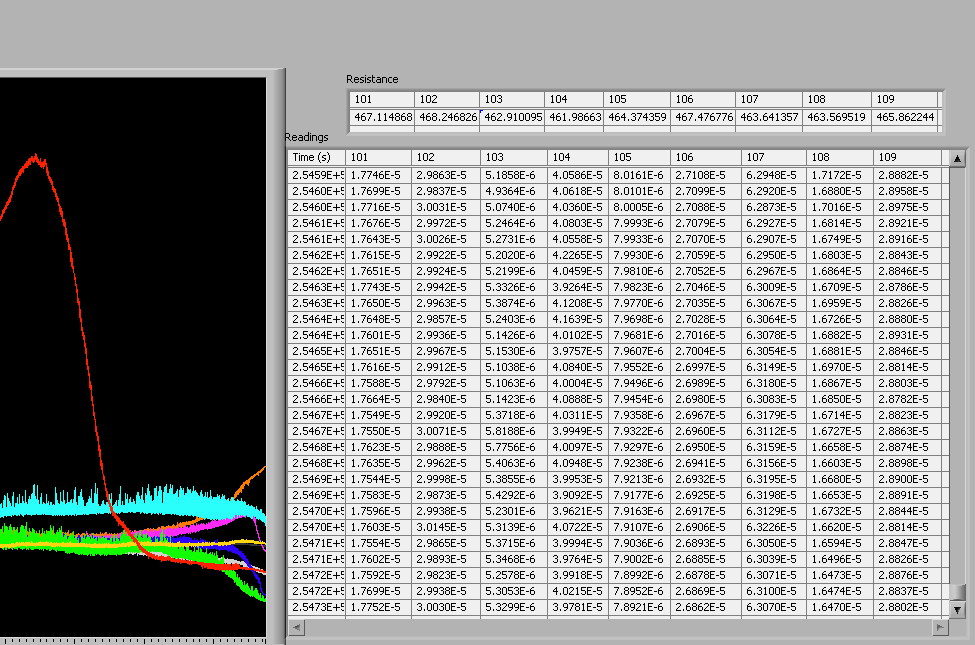Fuel Cell Development
Motivation
The broad goal of our project was to engineer s. Odenisis to produce a detectable change in electric current in response to some environmental stimulus. In order to observe such a reaction, our first task was to design an environment capable of housing bacteria and measuring current production.
Solution - Microbial Fuel Cells
Background
Microbial fuel cells (MFCs) are devices that use bacteria as the catalysts to oxidize organic and inorganic matter and generate current <ref></ref>. The principle behind these devices is to physically separate an oxidation reaction from a reduction reaction while providing a path for electrons to travel between them.
File:MFCsw1.jpg
Context
Design Goal
Functional description
The final product is a complete system capable of introducing separate strains of bacteria to multiple different environments while simultaneously measuring and recording current readings from each. The experimenter specifies the number of bacteria/environment combinations to be run, as well as the initial conditions for each. Data collection and storage is automated, with a computer displaying live current readings and graphing historical current levels. The experimenter can change the conditions of any fuel cell throughout the course of the experiment without affecting other fuel cells. The fuel cells themselves are stand-alone, capable of being treated as individual circuit components.
Specifications
Some experiments can last several days. Measurements must be automated to allow for overnight observation.
s. Odenisis only oxidizes substrates in anaerobic environments. The chamber housing the bacteria must be oxygen free and airtight.
Fuel cells must be capable of being sterilized to prevent contamination
Individual fuel cells must be similar enough to produce consistent results.
Experimenters must have access to the bacterial environment.
Approach
Decomposition into components
Construction of the system was broken down into three distinct parts. The most important components were the fuel cells themselves. Once these devices were built, a measurement system was constructed to sample current readings from each simultaneously. Software was developed to orchestrate these readings, recording and displaying them in real time.
Component descriptions and approaches
Fuel Cells
Measurement
We required that our measurement system be automated and capable of monitoring multiple fuel cells at once. Our original goal was to measure and compare output current levels between separate fuel cell environments. We choose to use current as the measured variable since previous studies in s. Onedisis and mutants gave us reasonable expectation values of the current magnitudes we would observe. As these reported current levels were on the order of microamps for similarly sized systems, we decided to purchase a high throughput commercial digital multimeter (DMM) to achieve the desired resolution. Finding a multiplexed system with large quantities of current channels proved difficult, and we adapted our schematic to measure voltage and resistance and then calculate current.
Our final product choice was the Keithley 2700 with a Keithley 7700 multiplexer accessory. This configuration provided 100 nA current resolution while allowing up to 20 devices to be sampled from at once.
We choose to use 470 Ohms as our resistance connecting the anode and cathode of each fuel cell. This choice was based on several considerations. We measured the resistance path from the surface of an anode to the surface of a cathode and found that it ranged from 5-10 Ohms. Our resistance had to be large enough that voltage drops across this internal resistance did not significantly affect the measured voltage drop across our external resistor. We also measured the resistance of the path from anode to cathode through the fuel cells media and membrane. This resistance was highly variable but typically ranged from 15K to 25K. Our external resistance had to be low enough that the vast majority of freed electrons traveled externally rather than through this variable media/membrane path.
Software
The task of our software program was to coordinate measurements through the DMM, record data, and display live data in graphical format. Some members of our team had prior experience with LabVIEW, which we used to develop these routines.
Working with the Keithley DMM, our program first samples resistances across each fuel cell's external resistor. It then switches the DMM measurement channel to voltage and enters a measurement loop. In each loop iteration, voltage samples are taken from all connected fuel cells and are divided by their previously measured resistances. This computed current is displayed in both graphical and tabular format, as well as stored in a .xls file. Current values are compared against a user specified threshold value, and a display indicates which chambers are over threshold. To avoid spikes, this function only returns true if a chamber's current level has been above threshold for the previous ten readings. An iteration ends by waiting for the next multiple of a user specified time. This ensures synchronous measurement intervals.
In LabVIEW, a block diagram is used to visually write c code. Our block diagram is shown here.
 
In Labview, an instrument panel is used to allow users to specify inputs and to display the status of program variables. Our instrument panel is shown here.
 
|  "
"




